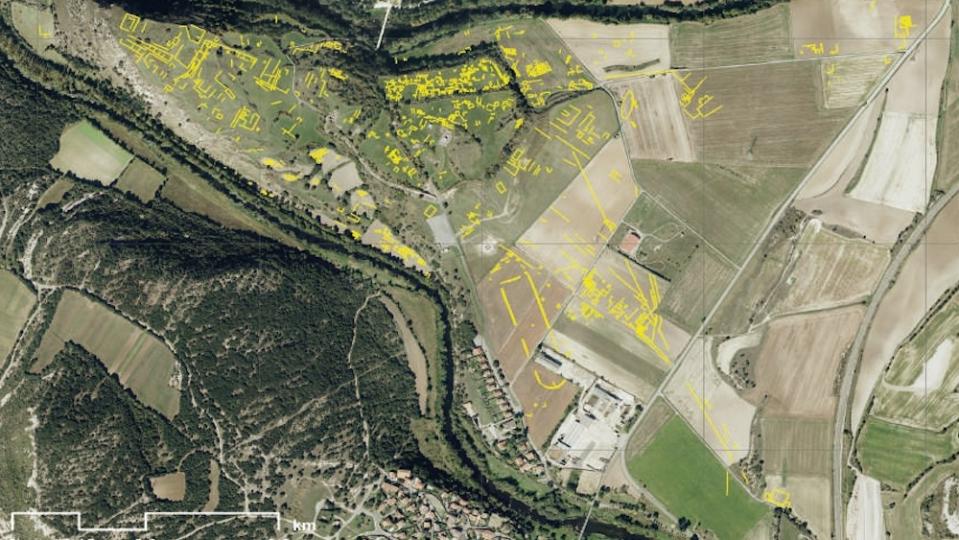When you buy through links on our articles, Future and its syndication partners may earn a commission.

Laser beams have revealed unknown structures, including the remains of a circus that hosted horse-drawn chariot races, that were once part of a sprawling Roman city hidden in what is now northern Spain.
Archaeologists announced their findings, which were part of a new pilot program, July 17, at a news conference. The researchers mapped the site of Iruña Veleia in what is now Álava, a province in the Basque Country, using lidar (light detection and ranging), in which laser pulses are beamed at the landscape from above and measured when they bounce back in order to image the terrain’s surface, according to a translated statement from the Provincial Council of Álava.
The new aerial map reveals several structures spread out across the 620-acre (251 hectares) site, including a 919-foot-long (280 meters) by 236-foot-wide (72 m) Roman “circus” arena that seated 5,000 spectators and hosted horse-drawn chariot races. This is only the third known Roman circus site in the Iberian Peninsula.
Chariot racing was a popular pastime in ancient Rome. In fact, there was an entire industry focused on it. And much like avid sports fans of today, enthusiasts aligned with their favorite stables of horses and charioteers and would travel from near and far to cheer them on, according to the World History Encyclopedia.
Related: Ancient language found on 2,100-year-old bronze hand may be related to Basque
In addition to the arena, Lidar also revealed arcade-lined streets, housing districts, meeting spaces for worship and buildings used for urban sanitation and water supply.
RELATED STORIES
—2,500-year-old slate containing drawings of battle scenes and paleo-alphabet discovered in Spain
—Paleolithic ‘art sanctuary’ in Spain contains more than 110 prehistoric cave paintings
—Cup crafted from prehistoric human skull discovered in cave in Spain
The urban center is “a jewel that is yet to be discovered,” according to the statement.
“The discovery is very important, and once again confirms that Iruña Veleia is a large ancient site, with great archaeological and historical research potential,” Ana del Val, deputy of Spain’s Department of Culture and Sports, said in the statement.
The researchers said they hope the site “receive[s] the attention it deserves, to protect it, to study it, to give it value and to create wealth for the whole territory.”
EMEA Tribune is not involved in this news article, it is taken from our partners and or from the News Agencies. Copyright and Credit go to the News Agencies, email news@emeatribune.com Follow our WhatsApp verified Channel





